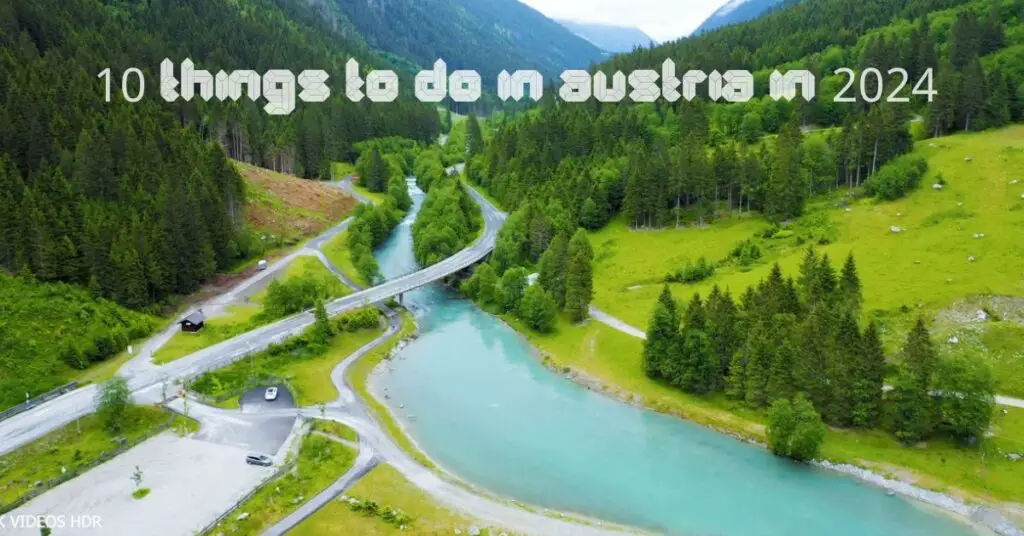Austria offers an unforgettable experience in 2024, with a curated list of the top 10 things to do in Austria. Explore imperial palaces, ski in the Alps, and indulge in local delicacies. Austria is a must-visit destination with stunning Alpine scenery, charming medieval towns, rich cultural heritage, and a vibrant culinary scene. Whether you’re a history buff, outdoor enthusiast, or foodie, Austria has something to offer everyone. The country is nestled in the heart of Europe, offering a myriad of activities, from the majestic Alps to charming cities steeped in history. Join us on a journey through this Alpine paradise, ensuring excitement, cultural immersion, and unforgettable memories.
Here are 10 unforgettable things to do in Austria:
1) Explore Vienna’s Imperial Palaces
Vienna, Austria’s “City of Dreams,” is a city of history and grandeur, known for its imperial palaces. These architectural wonders offer glimpses into the lives of the Habsburg dynasty, showcasing opulent interiors, fascinating histories, and glimpses into the lives of emperors and empresses.
(A) The Hofburg Palace:
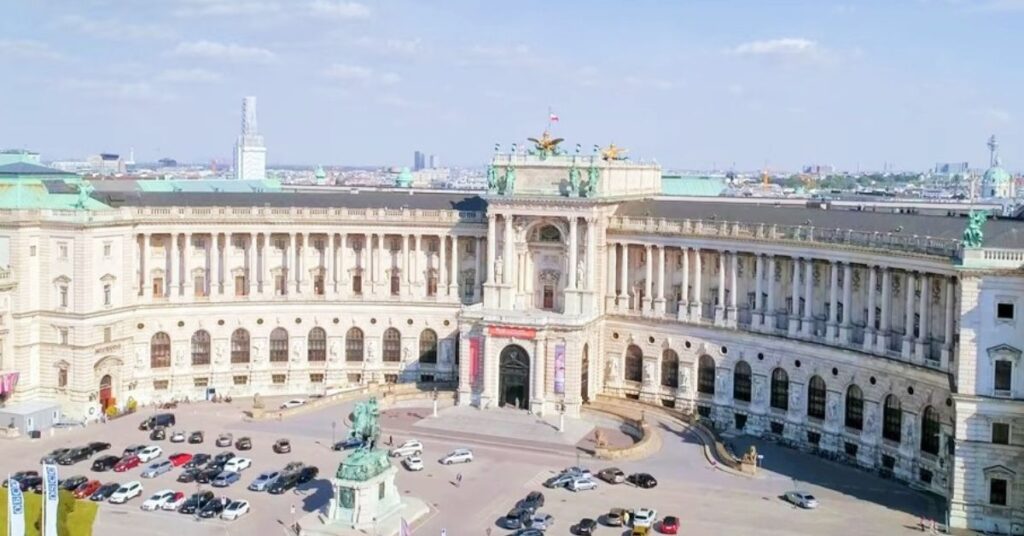
The Hofburg Palace, dating back to the 13th century, was the hub of the Habsburg dynasty’s power for over 600 years. Today, it houses several museums and attractions, providing a glimpse into imperial life. Nestled in Vienna, this regal complex serves as a testament to centuries of imperial history and grandeur. Explore the captivating allure of the Hofburg Palace as you journey through time.
What to see:
- Sisi Museum: Dedicated to Empress Elisabeth of Austria.
- Winter Riding School showcases Lipizzaner horses in classical dressage performances.
- The Imperial Silver Collection showcases the royal court’s ceremonial objects.
- The National Library houses ancient manuscripts, rare books, and historical maps.
- Hofburg Chapel is an architectural gem with centuries of ceremonies.
- Hofburg Congress Center hosts international conferences, concerts, and events.
(B) the Schönbrunn Palace:
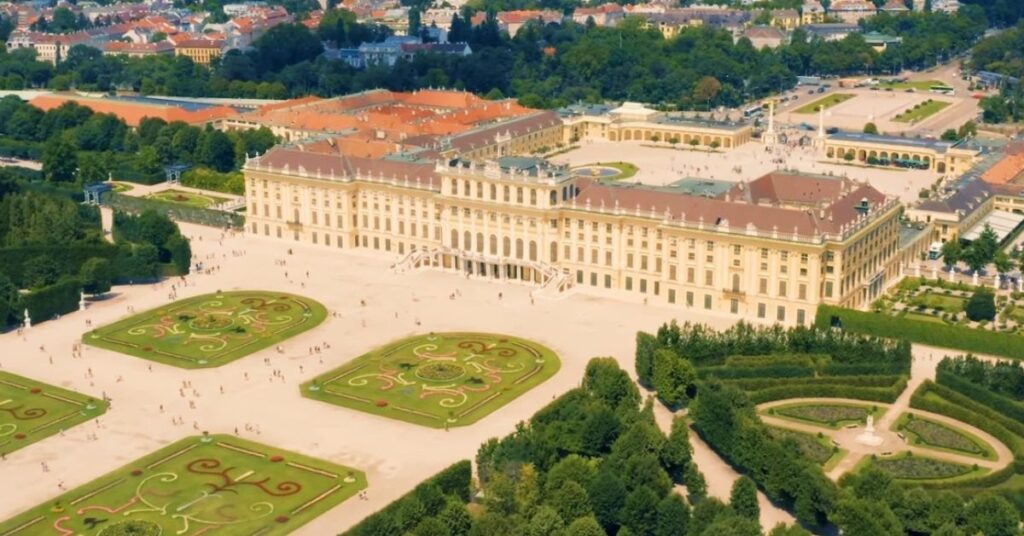
The Schönbrunn Palace, a UNESCO World Heritage Site in Vienna, is a must-see attraction. Originally the summer residence of the Habsburg monarchs, it boasts lavishly decorated state rooms, sprawling gardens, and a panoramic view of the city from Gloriette Hill. Nestled in the heart of Austria, it serves as a cultural treasure, offering visitors a captivating journey through history, art, and architectural splendor.
What to see:
- State Apartments: Luxuriously decorated with gold, crystal, and silk.
- Million Room: Named after tiny seashells on its walls.
- Great Gallery: Hall for grand banquets and receptions, featuring a Habsburg dynasty history painting.
- Private Apartments: Offers insight into the royal family’s personal lives, including Maria Theresa’s bedroom and Franz Joseph’s study.
- Schönbrunn Gardens offers landscaped gardens, panoramic views, and the world’s oldest zoo, Schönbrunn Zoo.
(C) Belvedere Palace:
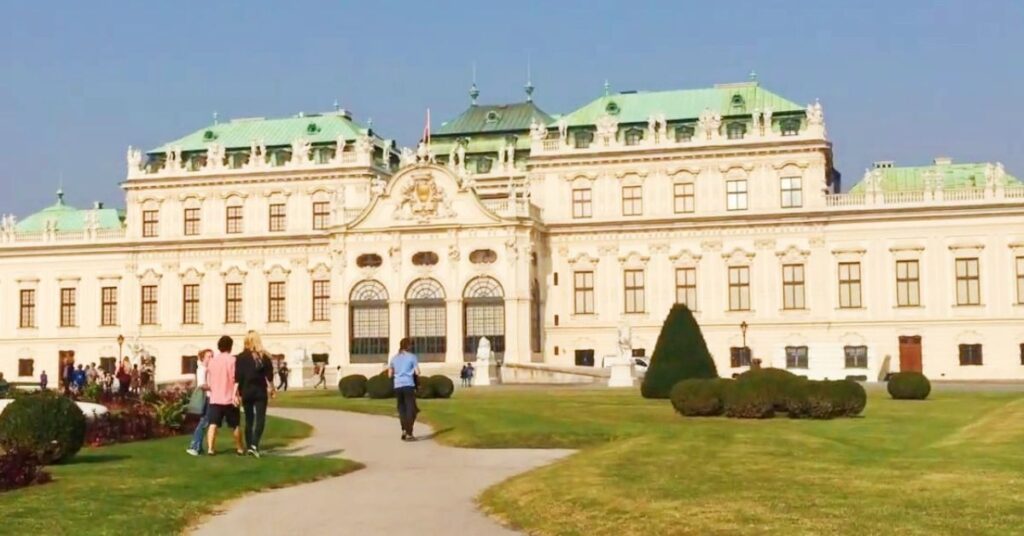
The Belvedere Palace, located in Vienna’s heart, is a UNESCO World Heritage site featuring two magnificent palaces, the Upper and Lower Belvedere, and houses two world-renowned museums. Originally a summer residence for Prince Eugene of Savoy, it showcases Baroque architecture and cultural richness.
What to see:
- Upper Belvedere houses a diverse collection of Austrian art, including “The Kiss” by Gustav Klimt and works by Egon Schiele and Oskar Kokoschka.
- Lower Belvedere hosts exhibitions and cultural events featuring contemporary art from the 20th century.
- The Belvedere Orangery, once a winter plant protection space, offers contemplation.
- Prince Eugene’s Winter Palace provides insight into Austria’s military lifestyle.
- Visitors can shop at the palace shop and the Belvedere Café for Viennese coffee and pastries.
2) Visit the Salzburg Old Town
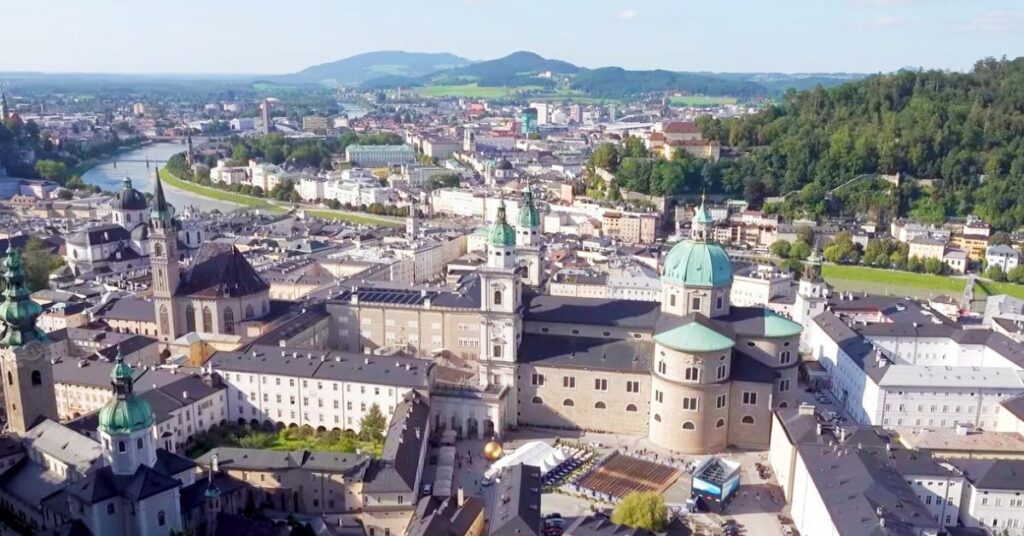
Salzburg’s Old Town, a UNESCO World Heritage Site, is a charming labyrinth of cobblestone streets, colorful houses, and Baroque architecture. Nestled along the Salzach River, it offers history, Mozart’s melodies, and Alpine beauty. The Hohensalzburg Fortress, overshadowed by the Old Town, adds to its charm. Visitors can explore narrow alleys, admire architectural gems, and immerse themselves in Mozart’s birthplace atmosphere.
Explore the Salzburg’s Old Town:
- Features iconic landmarks like Residenzplatz and Salzburg Cathedral.
- Getreidegasse 9 offers quaint shops and boutiques.
- Mozart’s Birthplace: Located at Getreidegasse 9.
- DomQuartier Museum Complex: Comprehensive Art, History, and Ecclesiastical Treasures Journey.
- St. Peter’s Abbey and Cemetery: Inspired by “The Sound of Music.”
- Mozart Square is a picturesque spot for city ambiance.
3) Go skiing and snowboarding
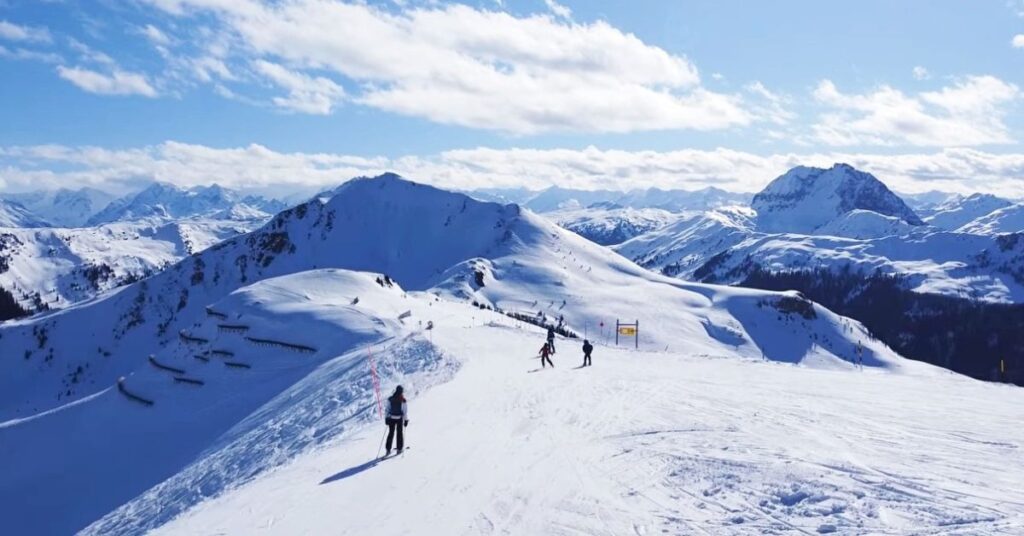
Austria, a land of mountains, picturesque villages, and world-renowned ski resorts, is a paradise for winter sports enthusiasts. Whether you’re a seasoned skier or a beginner, skiing and snowboarding offer thrilling ways to experience the beauty of winter. Whether you’re seeking speed or mountain air, Austria’s alpine adventure is unforgettable, making it a must-visit destination for winter sports enthusiasts.
Ski Areas:
- Ski Arlberg: Over 300 km of groomed pistes for all skill levels.
- Serfaus-Fiss-Ladis is a family-friendly resort with interconnected villages, themed runs, and children’s areas.
- Sölden: year-round skiing and snowboarding with the Black Mamba run, freestyle park, and vibrant après-ski scene.
snowboarding Resorts
- Ischgl Snowpark: Europe’s largest snow park with rails, boxes, and kickers.
- Silvretta Arena: challenging terrain for freeriders.
- Saalbach-Hinterglemm: Snowboarder paradise with half-pipes, rails, and jumps.
4) Take a boat ride on Lake Hallstatt
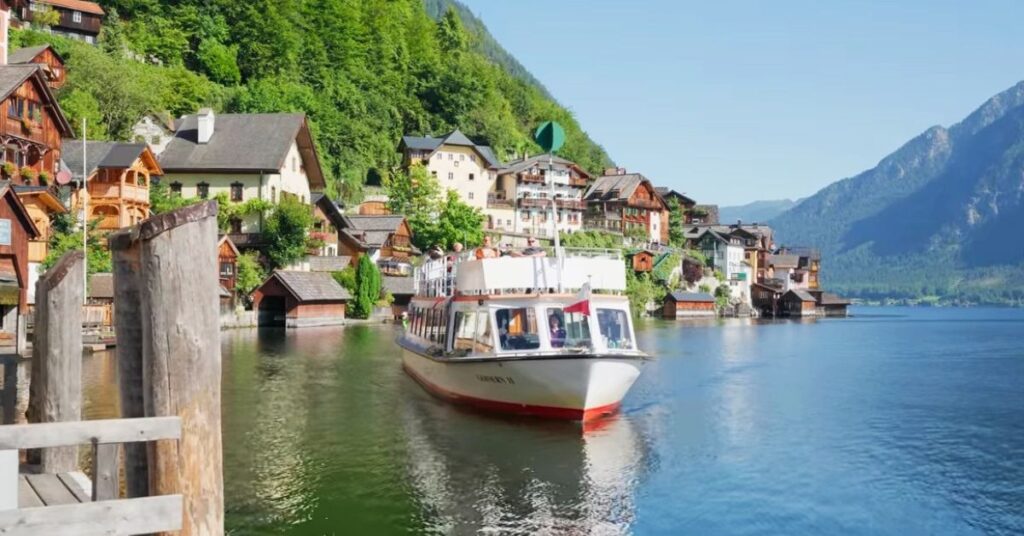
Hallstatt, a picturesque village in the Austrian Alps, is known for its charming architecture, alpine landscapes, and Lake Hallstatt. A serene boat ride on the crystal-clear waters of Lake Hallstatt offers visitors a unique Austrian experience, allowing them to immerse themselves in the beauty and serenity of this UNESCO World Heritage site. The serene atmosphere and picturesque surroundings make it an
Exploring Lake Hallstatt:
- Lake Hallstatt, known as the “Pearl of the Salzkammergut,” offers a picturesque backdrop for the charming village of Hallstatt.
- Boat trips offer a unique way to appreciate the village’s unique setting and the surrounding landscape.
Types of boat rides:
- Classic Sightseeing Tour: A leisurely cruise around the lake, past Hallstatt village, and stunning mountain views.
- Electric Boat Rental: A more intimate experience, allowing exploration at your own pace.
- Echerntal Waterfall Tour: Combine a boat ride with a scenic hike to the majestic waterfall.
5) Hike in the Austrian Alps
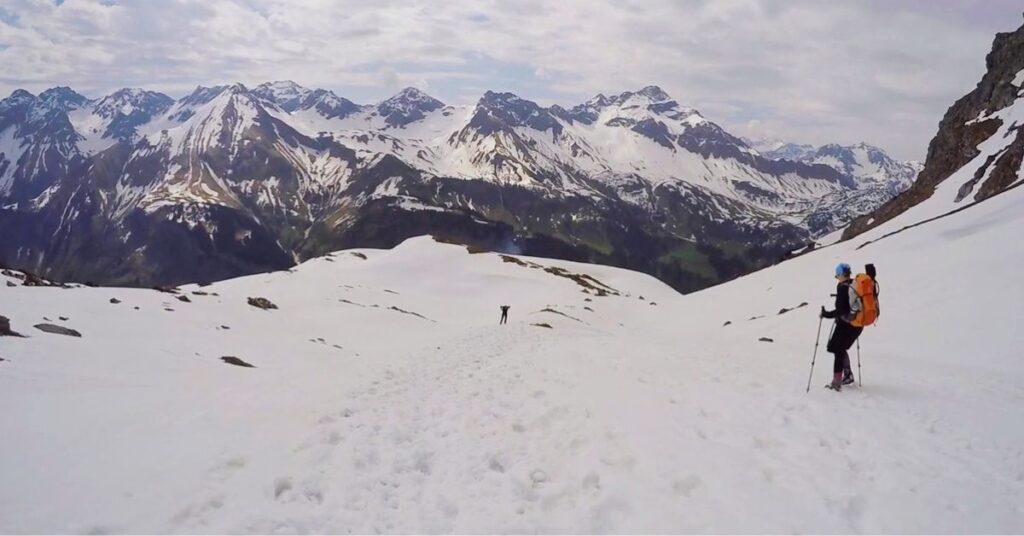
The Austrian Alps, renowned for their soaring peaks, lush valleys, and charming alpine villages, are a thrilling destination for hikers of all levels. Whether you’re a seasoned trekker or a nature enthusiast, this alpine wonderland offers a journey of discovery with its crystalline lakes, verdant meadows, and breathtaking landscapes. With an array of trails, Austria offers both challenge and reward.
Hiking regions in Austria:
- Tirol is known for the Grossglockner Mountain and challenging trails like the Eagle Way.
- Salzburg offers scenic views from Dachstein peaks, challenging hikes, and charming alpine towns.
- Carinthia offers crystal-clear lakes and rolling hills, hiking through Nockberge National Park, challenging Millstatt Mountain Hike, and family-friendly walks around Lake Wörthersee.
6) Discover the Wachau Valley
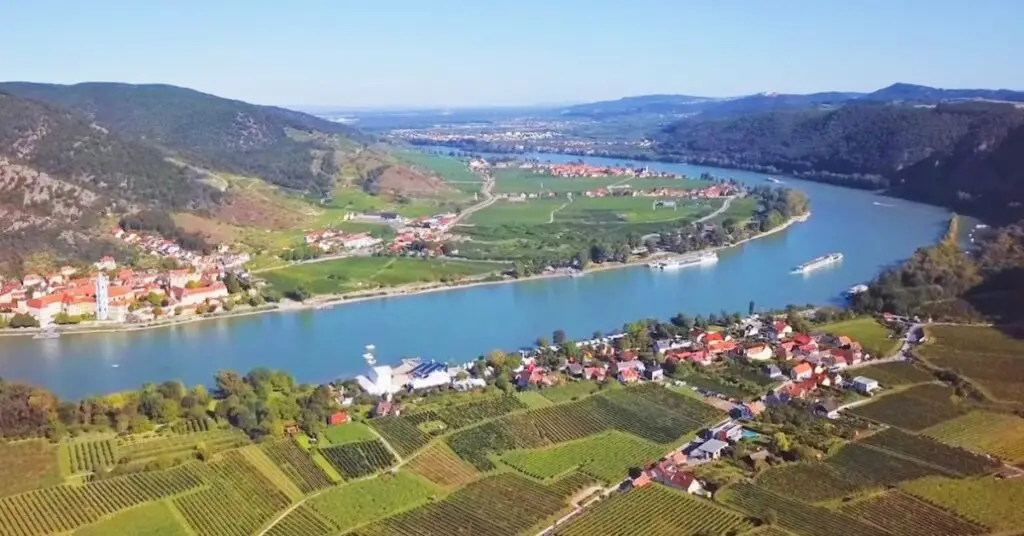
The Wachau Valley, a UNESCO World Heritage Site in Lower Austria, is a picturesque landscape surrounded by medieval castles, terraced vineyards, and charming river villages. It is known for its picturesque scenery, cultural heritage, and world-class wines, offering travelers a journey through time and terroir. The valley is situated along the Danube River and is a must-visit destination for wine enthusiasts.
Wachau Valley Activities:
- Visit vineyards and wineries, learn about winemaking traditions, and enjoy tastings.
- Explore charming villages like Dürnstein, Krems, and Spitz, with colorful houses, Baroque churches, and historical landmarks.
- Explore medieval castles like Aggstein and Dürnstein, with their panoramic views and historical significance.
- Take a leisurely Danube River cruise to admire the valley’s beauty.
- Rent a bike and explore the valley at your own pace, stopping at charming villages.
- Hike and trek through the valley’s hidden trails, discovering lush forests, waterfalls, and breathtaking viewpoints.
- Visit Melk Abbey, a Benedictine monastery with an opulent Baroque interior, an ancient manuscript library, and panoramic views.
7) Explore the Eisriesenwelt Ice Cave
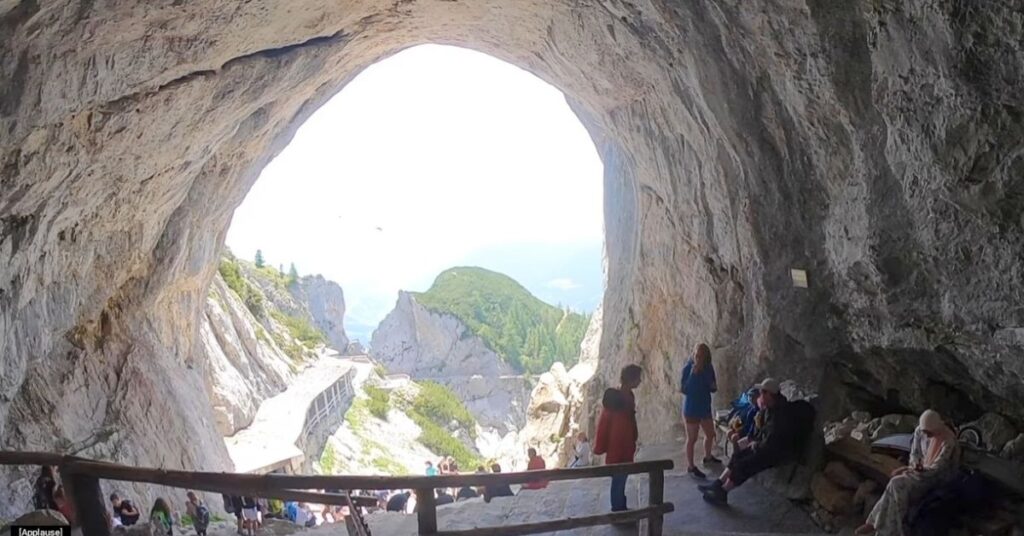
The Eisriesenwelt Ice Cave, located in Austria’s Hochkogel mountain, is the world’s largest ice cave, spanning over 42 kilometers. This frozen wonderland offers an unforgettable experience, featuring sparkling ice palaces, towering waterfalls, and hidden chambers. Located near Werfen, this underground landscape is a mesmerizing underground world crafted by nature’s frozen artistry, transporting visitors into a world of awe and enchantment.
Journey into a Crystal Kingdom:
- Tram and Cable Car Ride: Explore the scenic Werfen village and Austria’s steepest cable car.
- Entrance to the Cave: Experience the icy wonderland with cold air and dim twilight.
- Marvelous Ice Formations: Witness towering columns, shimmering draperies, and delicate ice crystals.
- Frozen Waterfalls: Witness majestic frozen waterfalls cascading down like glacial tears.
- Hidden Chambers: Discover hidden chambers through narrow passages and sturdy staircases.
- Beyond the Ice Cave: Explore Werfen Castle and Salzburg: Enjoy panoramic views of the valley and Mozart’s birthplace.
8) Relax in Austrian thermal spas
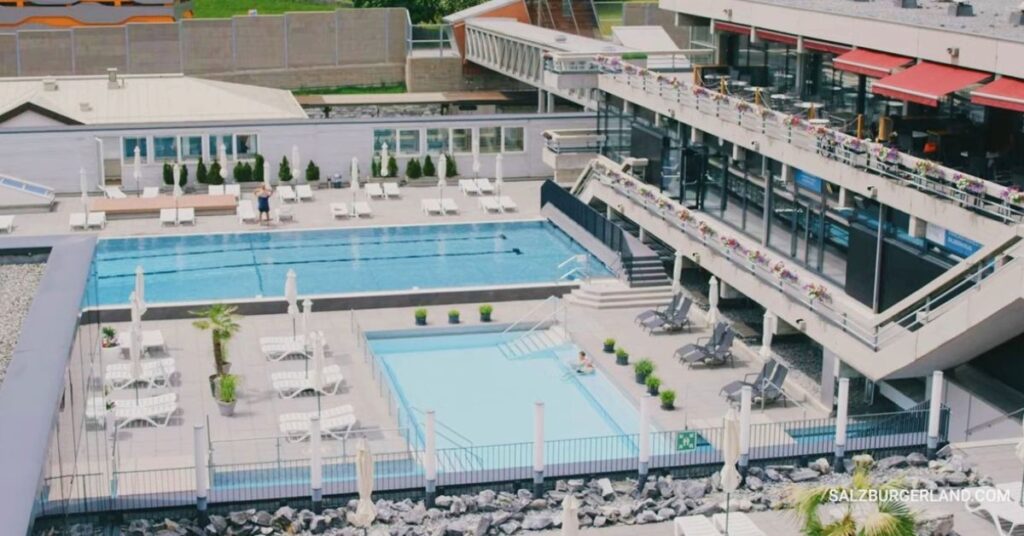
Austria, known for its picturesque landscapes and cultural treasures, offers visitors a chance to unwind and rejuvenate in its world-class thermal spas. Nestled amidst the Alpine beauty, these retreats provide relaxation and therapeutic benefits from mineral-rich waters. From Roman-era baths to modern wellness sanctuaries, Austria offers a perfect spa experience amidst breathtaking landscapes.
Thermal Spas in Austria:
- Felsentherme Gastein: Experience healing Bad Gastein waters.
- Römertherme Baden: modern wellness with thermal pools, saunas, and relaxation areas.
- Geinberg Thermal Spa: A Luxury Experience in Upper Austria.
- Alpine Wellness at Aqua Dome: Alpine Wellness in Längenfeld.
- Carpe Diem: Relaxation in Salzburg.
- Thermal Waters of Heiligenblut: Explore thermal waters in High Tauern National Park.
- Peaceful Retreat at Rogner Bad Blumau: Discover artistic and architectural wonders.
- Vamed Vitality World: Diverse wellness experiences across Austria.
9) Tour the Kunsthistorisches Museum in Vienna
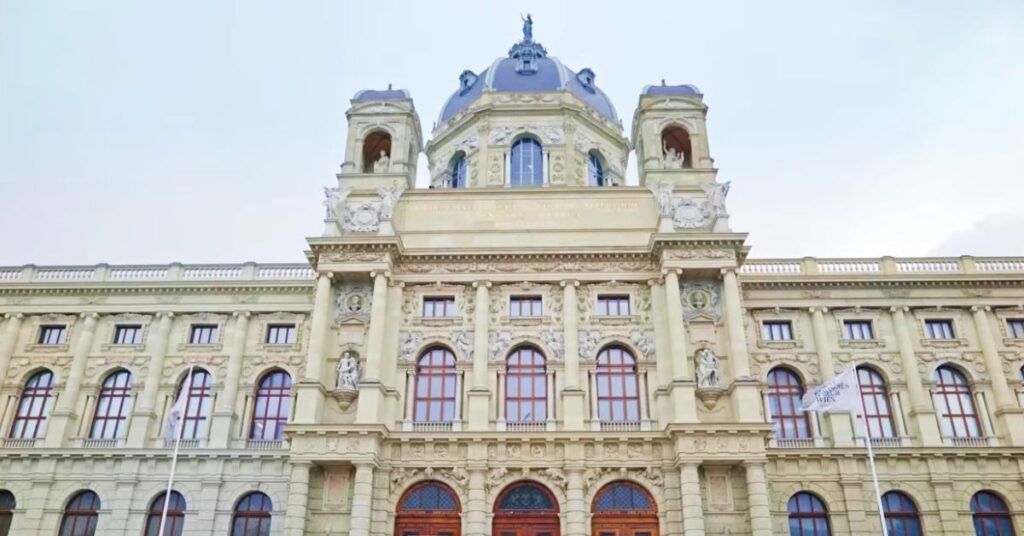
The Kunsthistorisches Museum, located in Vienna’s heart, is an opulent palace of art that offers a glimpse into centuries of artistic masterpieces and historical treasures. Housed in a grand neoclassical building, it showcases a vast collection spanning from ancient civilizations to the European Renaissance. Visitors can embark on a captivating journey through the museum, which is a cultural gem that invites them to explore its rich tapestry of art and history.
Highlights at the Museum
- The Picture Gallery: Explore Italian Renaissance works by Titian, Tintoretto, Veronese, and Caravaggio.
- The Kunstkammer: Explore the Habsburgs’ treasure cabinet, featuring gold saltcellars, precious ivory carvings, and a unique agate cup.
- The Egyptian and Near Eastern Collection: Explore ancient civilizations with mummies, sarcophagi, hieroglyphics, Mesopotamian cuneiform tablets, Babylonian cylinder seals, and gold jewelry.
- The Imperial Treasury: Witness the Habsburgs’ wealth with crowns, jewels, and regalia.
10) Taste the local cuisine
Austrian cuisine is a blend of hearty comfort food, rich flavors, and regional specialties. It offers a variety of dishes, from decadent pastries to savory stews, catering to every palate. Austria is a culinary wonderland, offering a culinary adventure with must-try dishes and regional specialties.
Austrian Culinary Adventures:
Classic Viennese Delights:
- Wiener Schnitzel: Thinly breaded and pan-fried veal cutlet served with lemon wedges and cranberry jam.
- Tafelspitz: Boiled beef served with vegetables and horseradish, a traditional Austrian comfort food.
- Sachertorte: Rich chocolate cake with apricot jam and dark chocolate icing.
- Apfelstrudel: A flaky pastry filled with spiced apples, raisins, and nuts, served with whipped cream or vanilla sauce.
Regional Specialties:
- Kärntner Kasnockn: Cheese dumplings with potatoes and onions, a hearty dish from Carinthia.
- Tiroler Gröstl: Pan-fried potatoes, onions, and meat, a traditional Tyrolean dish.
- Vorarlberger Käsespätzle: Cheese noodles with crispy onions, a comforting dish from Vorarlberg.
- Salzburgburger Nockerln: Light and fluffy soufflé dumplings served with vanilla sauce, a unique Salzburg dessert.
Sweet Treats:
- Mohrenkopf: A chocolate ball filled with whipped cream and rum, a classic Austrian pastry.
- Linzer Torte: Shortcrust pastry filled with raspberry jam and topped with a lattice design, a traditional Linzer cake.
- Germknödel: Steamed yeast dumplings filled with plums or apricot jam, a delicious and fluffy dessert.
Faqs
-
What is the best time to visit Austria?
Austria is an amazing country to visit anytime of the year, but the most suitable time to go depends mostly on your travel plans. A good time to visit is in the spring (May–June) or summer (July–August) if you want to take advantage of the nice weather and outdoor activities. But autumn (September–October) or winter (November–April) are better options if you want less heat and fewer people.
-
Do I need a visa to visit Austria?
Austria does not require a visa for visitors from most European nations. You might, however, need to apply for a visa if you are a citizen of a nation outside of the European Union. Visit the official website of Austria to find out if your nation requires a visa.
-
In which language is Austrian spoken?
German is the official language of Austria. In tourist places, however, English is usually spoken.
-
Which things must I pack for my trip to Austria?
You must pack walking shoes because you will probably be doing a lot of exploration. Depending on the season, you might also wish to bring warm clothing, a raincoat, and an umbrella.
-
What cultural events will Austria host in 2024?
Look out for cultural events that highlight Austria’s rich cultural legacy, such as the Vienna Opera Ball, the Salzburg Festival, and other regional music and art festivals.
-
Which outdoor activities are best for Austrian adventure seekers?
Hiking in the Alps, skiing at well-known resorts, cycling on picturesque paths, and discovering the stunning lakes and scenery are all options for adventure enthusiasts.
-
In 2024, how can I eat Austrian food?
Enjoy regional eateries’ typical Austrian fare, such as Wiener Schnitzel, Sachertorte, and Apfelstrudel. To experience a range of Austrian treats, think about going to culinary festivals.
-
Can I explore Austria on a budget in 2024?
Of course! To keep your Austrian trip affordable, look for reasonably priced accommodation alternatives, take public transportation, and think about seeing lesser-known attractions.
